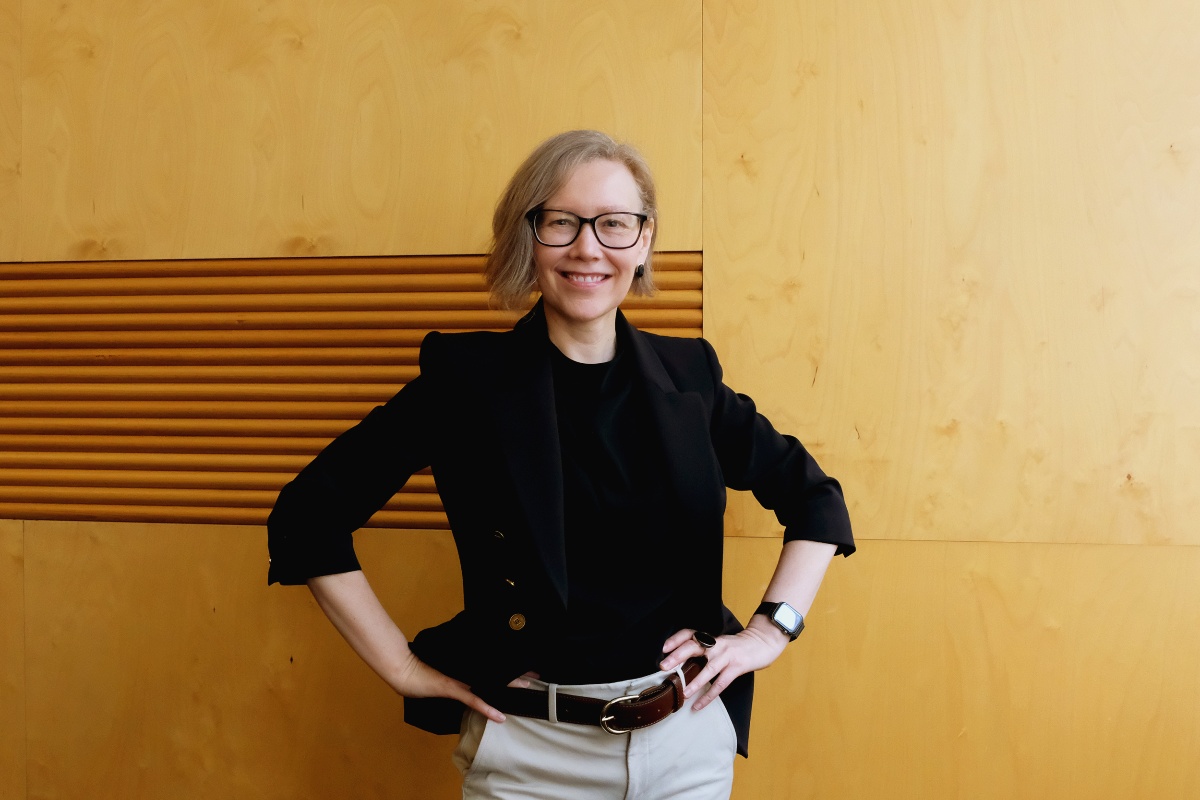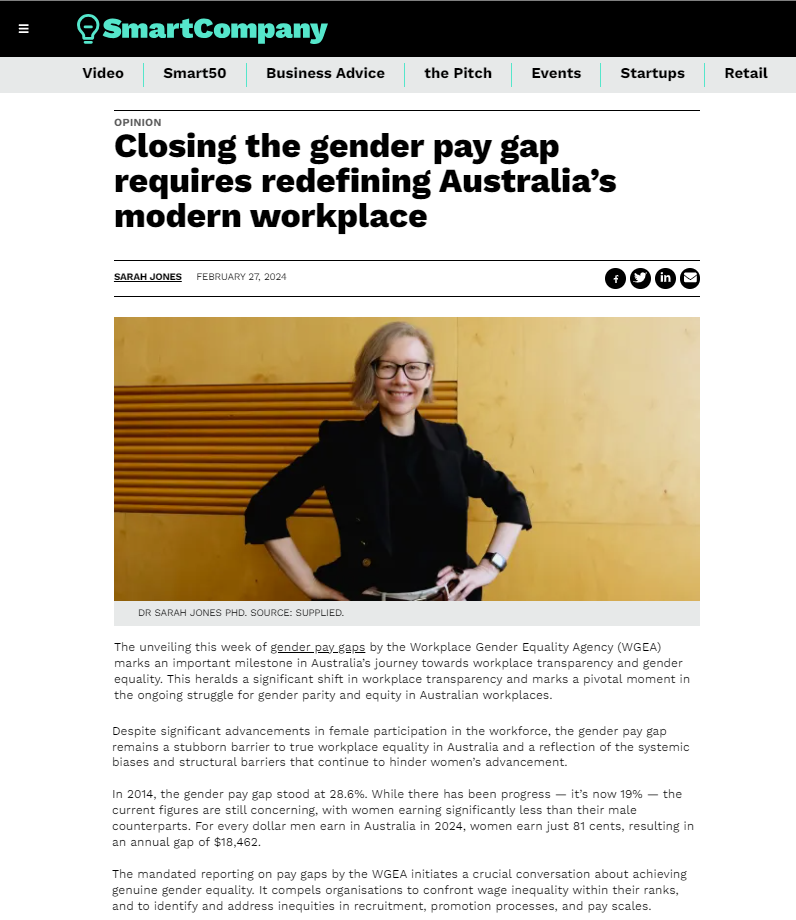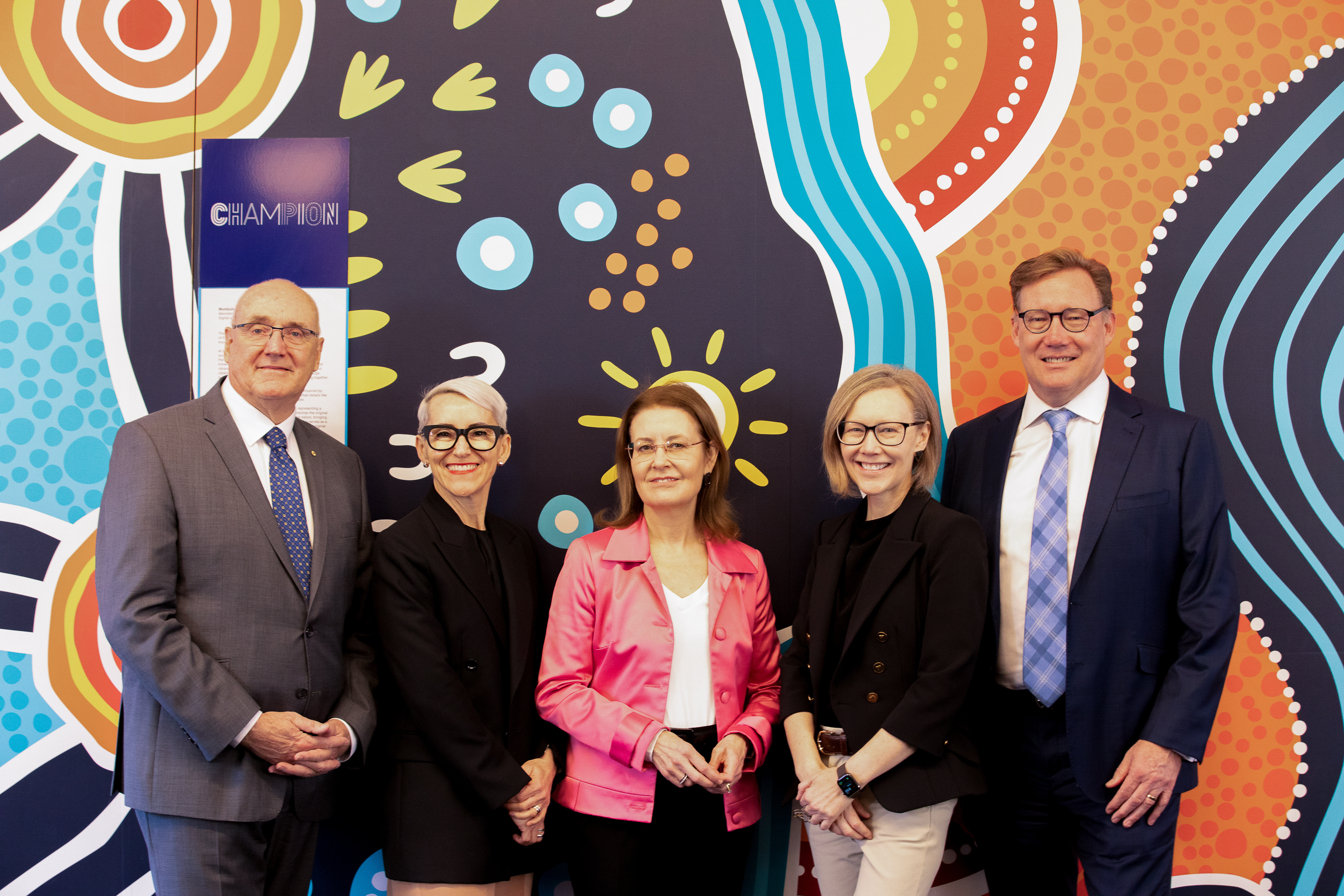Stories
Smart Company: Closing the gender pay gap requires redefining Australia’s modern workplace
2 min read
Smart Company: Closing the gender pay gap requires redefining Australia’s modern workplace
Dr Sarah Jones 27 February 2024

by Dr Sarah Jones, CEO of the Sydney School of Entrepreneurship
The unveiling this week of gender pay gaps by the Workplace Gender Equality Agency (WGEA) marks an important milestone in Australia’s journey towards workplace transparency and gender equality. This heralds a significant shift in workplace transparency and marks a pivotal moment in the ongoing struggle for gender parity and equity in Australian workplaces.
Despite significant advancements in female participation in the workforce, the gender pay gap remains a stubborn barrier to true workplace equality in Australia and a reflection of the systemic biases and structural barriers that continue to hinder women’s advancement.
In 2014, the gender pay gap stood at 28.6%. While there has been progress — it’s now 19% — the current figures are still concerning, with women earning significantly less than their male counterparts. For every dollar men earn in Australia in 2024, women earn just 81 cents, resulting in an annual gap of $18,462.
The mandated reporting on pay gaps by the WGEA initiates a crucial conversation about achieving genuine gender equality. It compels organisations to confront wage inequality within their ranks, and to identify and address inequities in recruitment, promotion processes, and pay scales.
But achieving gender parity requires more than merely closing pay differentials; it demands a fundamental redefinition of the modern workplace.
This redefinition must embrace flexibility, diversity, and inclusion as core values, recognising the true value these qualities bring to both the workforce and the nation.
Flexible working arrangements, such as remote work and flexible hours, play a vital role in leveling the playing field for women. These arrangements empower women to balance professional and personal responsibilities effectively, leading to enhanced workplace productivity, satisfaction, and retention rates. Moreover, they benefit individuals of all genders, fostering a culture of inclusivity and diversity.
To truly open opportunities for women, innovation is needed in both workplaces and education systems. Initiatives that facilitate skills growth for diverse groups of women, including school children, First Nations peoples, rural Australians, and women from culturally and linguistically diverse communities, are essential. By empowering these individuals with transferable, in-demand skills and entrepreneurial opportunities, wherever they are in Australia, we can unlock their potential and drive economic growth.
Microbusinesses, predominantly owned by women, make up 89% of all businesses and help form the backbone of the Australian economy – and it’s women owners who are making up much of the growing sector. According to the Global Entrepreneurship Monitor (GEM) 2020-2021 Women’s Report, women now account for 35% of new entrepreneurs. Yet too often, women-owned ventures are relegated to the persistent trope of ‘side hustle’, which sees them overlooked for investment and scaling opportunities. Overcoming these barriers is crucial for maximising the economic potential of women entrepreneurs and driving innovation.
A 2022 Deloitte report found that embracing more flexible ideas around gender could lead to an additional $128 billion each year for Australia’s economy and 461,000 additional full-time employees. This highlights the economic imperative of addressing gender inequality and creating inclusive workplaces.
It’s time. While achieving pay parity may be a gradual process, it is essential for building a more equitable future. Organisations must seize the opportunity to create workplaces that reflect Australia’s commitment to equality and justice. By embracing diversity, fostering inclusivity, and promoting flexibility, we can create a more prosperous and equitable society for all. Australia’s economic future depends on it.
Disclaimer: this article was originally published on Smart Company on 27 February 2024.



